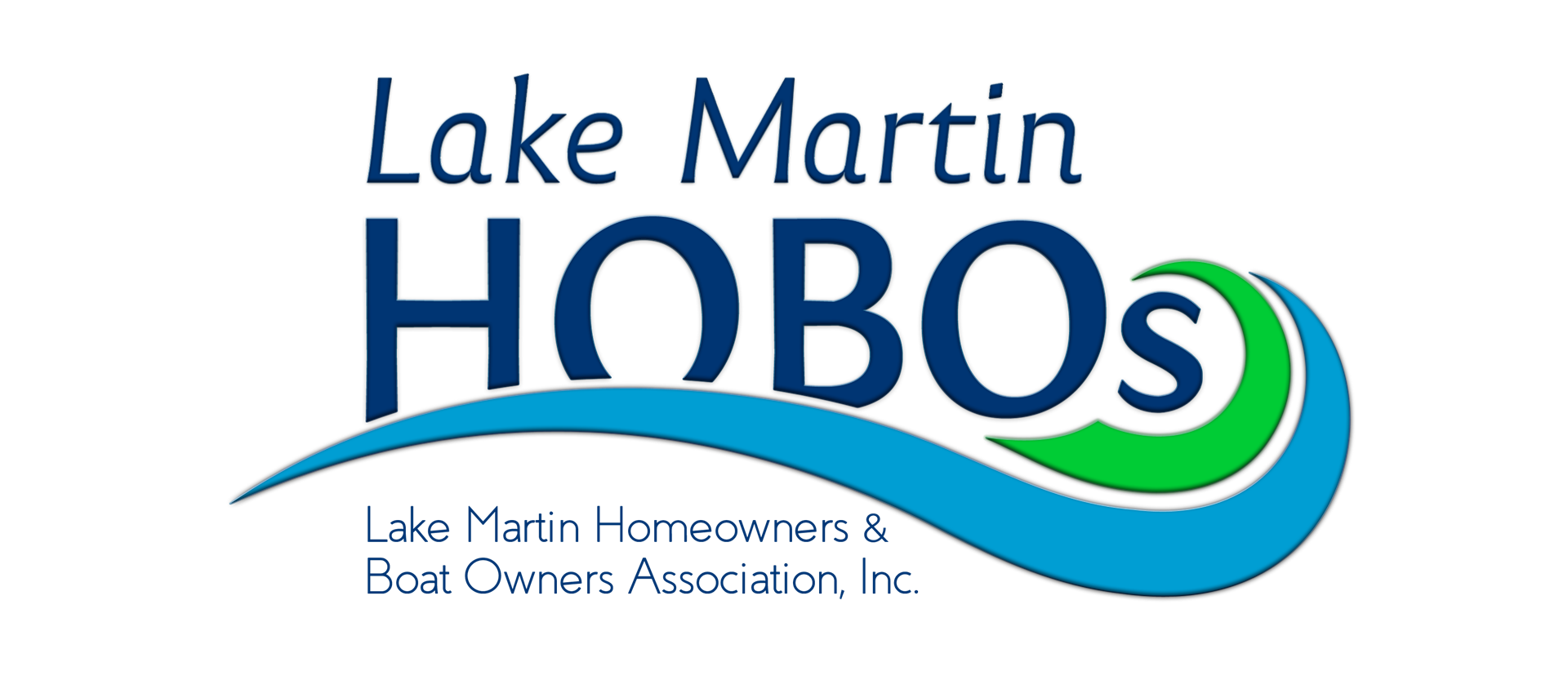Watching area development with a vigilant eye |
This article is courtesy of Lake Watch of Lake Martin In response to concerns voiced by Lake Watch of Lake Martin (Lake Watch) members and members of the Lake Martin community about the Alabama Graphite processing plant under construction at Lake Martin Regional Industrial Park in Kellyton, AL and its impact on Lake Martin, Lake Watch requested a meeting with ADEM officials to discuss the matter. Lake Watch representatives Matt Campbell (President), Bill Butler (Vice-president), Eric Reutebuch (Graphite committee chair) and Harry DeNegre (HOBO President, LW board member) met with ADEM Director Lance LeFleur and six program managers at the ADEM headquarters in Montgomery in mid-April. We had a productive meeting. ADEM answered all of our questions. We gained a lot more information on the ADEM permit process for the Alabama Graphite processing plant and got more clarity on the Alabama Graphite processing plant wastewater that will be flowing to the Alexander City Sugar Creek wastewater treatment plant (WWTP). Our position is focused on protecting Lake Martin. We believe that Lake Watch, Lake Martin HOBO and the Lake Martin community should urge special attention for this special lake. This is no ordinary lake – it is the one and only Treasured Alabama Lake in the state. And, this is no ordinary industrial discharge – it is discharge from the first graphite processing plant in the United States. Currently, there are no specific EPA federal effluent guidelines (numeric limits for specific pollutants) governing this discharge since, until now, the industry hasn’t existed in the US. ADEM uses best professional judgement, evaluations of the municipal WWTP, and water quality standards in developing the permit. Again, special treatment/precautions need to be taken. To this end, we have urged Alabama Graphite to incorporate the highest level of wastewater treatment at their Kellyton processing plant. We also urge ADEM to closely monitor the Alabama Graphite wastewater before it is discharged to the Sugar Creek WWTP and into Lake Martin.
At the meeting, ADEM informed us that presently the Alabama Graphite wastewater is the only permitted industrial wastewater being discharged to Sugar Creek WWTP. Alabama Graphite provided a wastewater analysis in their permit application to ADEM that was generated via analysis from a pilot project and computer modeling as their best estimate of their wastewater composition. The ADEM permit is a State Indirect Discharge (SID) permit, which is a permit to discharge into a municipal WWTP (not a direct discharge into a lake, river or stream). In the permit, ADEM requires Alabama Graphite to submit an updated comprehensive actual analysis of their plant’s wastewater within six months from initiation of the discharge.
ADEM stated that the projected 400,000 gallons per day discharge from Alabama Graphite is a small fraction of the Sugar Creek WWTP 8.5 million gallons per day capacity. Members of the Lake Martin groups expressed concerns about an increase in the concentration of dissolved salts in the lake. Dissolved salts are manifested by elevated levels of total dissolved solids (TDS) in the Alabama Graphite discharge and are mostly from calcium (Ca) and magnesium (Mg), common components in soil and in seawater that are not toxic. ADEM stated that the amount of salts being added by the Alabama Graphite discharge is a small amount in relation to the design capacity of the WWTP. Also, Lake Martin has about a 190-day retention time, meaning the water in the lake is renewed every 190 days, primarily by incoming flow from the Tallapoosa River and outgoing flow through Martin Dam. ADEM is confident that the reported levels of heavy metals, another concern, will not be a problem in the discharge. They stated that such metals, if present in the graphite ore, precipitate out in the graphite purification and pH adjustment processes. If present at all, metals will be at levels similar to those in domestic sewage based on the data provided in the application. Some have expressed concerns about acidity and pH of the discharge. ADEM stated that the range of allowable pH for the discharge, 5.0 – 10.5, is the common range for SID permits and is protective of municipal WWTPs. Others were concerned about the presence of ‘forever chemicals’ (for example, per- and polyfluoralkyl substances (PFAS)) in the Alabama Graphite discharge. ADEM stated that there are no significant levels of forever chemicals expected in the discharge and that you would likely find higher levels in everyday residential wastewater. Although ADEM issued the permit to Alabama Graphite, the Alexander City Sugar Creek WWTP has the final say on the volume and composition of the wastewater that they will accept into their plant. The proposed discharge will not require any upgrades to the Sugar Creek WWTP plant. Alexander City has written an acceptance letter which is included in the ADEM permit application. And finally, the ADEM permit issued to Alabama Graphite is subject to review by the EPA. Bottom line: ADEM stated that they have no serious concerns about the pollutants listed in the Alabama Graphite wastewater characterized in the Alabama Graphite permit application. The SID permit was developed to be protective of the receiving stream and municipal WWTP. ADEM is confident in the multiple layers of water quality protection for the lake which include:
Although there are still unknowns, we felt more confident after our meeting that Lake Martin will not be adversely impacted by the Alabama Graphite discharge, and that ADEM was on top of the situation. After thanking Director LeFleur and his staff for graciously hosting us and answering our many questions, we headed back to our beloved lake. We will be watching closely for the analyses of the Alabama Graphite wastewater once the plant is operating, and analyzing the reports to verify that no toxic substances are entering the lake. We are currently formulating our ‘next steps’ in our lake protection strategy regarding this new discharge coming to Lake Martin. Consider assisting us in this effort by becoming a member of Lake Watch and/or making a donation – go to www.lakewatch.org for more information. |



